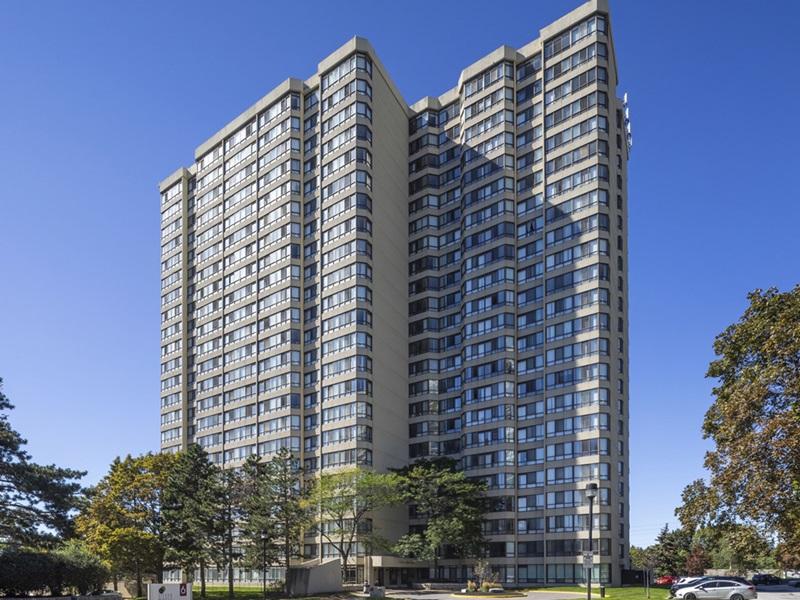
Phil Soper, president and CEO of Royal LePage and Bridgemarq Real Estate Services. (Image courtesy Royal LePage)
The Omicron variant of COVID-19 will likely act as a stimulant to Canada’s residential real estate market in 2022 by delaying central bankers’ plans to raise interest rates, says Royal LePage president and CEO Phil Soper.
“I believe it will cause policymakers, central banks (and the) Bank of Canada to pause in their battle against inflation. In other words, it will delay aggressive interest rate hikes to combat inflation,” he says.
Soper forecasts an anticipated second-quarter interest rate hike will get pushed into the second half of 2022. “I can’t see the emergence of a new variant, that’s causing cases to spike to levels we haven’t seen through the entire pandemic, doing anything but delaying monetary policy tightening.”
With low interest rates set to continue, the Omicron variant extends the period of “the COVID catalyst” for residential real estate, which, he notes, is one of the sectors that have flourished during the pandemic.
Housing market to remain hot
Soper was speaking about the Royal LePage Market Survey Forecast for 2022, which predicts the aggregate price of a home in Canada is set to rise 10.5 per cent year-over-year to $859,700 in 2022.
The brokerage forecasts the median prices of a single-family detached property and condominium will increase 11 per cent and eight per cent next year, respectively. Those are about half the increases seen in much of the country during a “hyperkinetic” 2021, he says.
It remains a sellers’ market and, while inventory is still very tight, it is slightly better than last spring and early summer “when things were uncomfortably out of balance.”
Soper adds with back-to-the-office mandates curtailed and people continuing to work from home, the Omicron variant “puts hyper-focus on one’s living accommodations and that drives transactions.”
People’s homes have become their offices and kids’ schools, and with entertainment curtailed, their restaurants and movie theatres for an extended period during the pandemic, he notes. This will continue the household cash stockpiling trend that has marked the pandemic.
“If you’re going to be living and working from home, you’ll take the maximum amount of space you can afford in the community you’re willing to live.”
Canada’s multiresidential sector
However, while many Canadians would like to have large single-family homes, economic reality dictates otherwise. That is good news for the multiresidential sector, which was hard hit in the early days of the pandemic as people sought more space.
As the gap in prices between detached homes and entry-level condominiums has grown, the pendulum has swung back in favour of multiresidential for investor owners and first-time buyers, he says.
He notes that in Greater Vancouver, single-family detached homes are forecast to rise 12 per cent in 2022 to $1.89 million – simply out of reach for many people. By contrast, condos in the city are forecast to rise eight per cent to $766,800, “a lot of money but a fraction of (about) $2 million.”
The GTA is the only region where condominium price appreciation is forecast to outpace that of detached homes, according to Royal LePage. Condo prices are expected to rise 12 per cent in 2022 to $763,800, while single-family detached properties are expected to rise 10 per cent to $1.564 million.
First-time buyers in the GTA are focusing on condominiums as they’re more affordable. The city is the major destination for new Canadians and Royal LePage research shows immigrants overwhelmingly intend to rent condominiums in the first three years they live in Canada.
Immigration to result in new demand
Royal LePage also forecasts the federal government’s plan to increase immigration levels will bring a surge of new demand, particularly in large cities.
Canada is also the third-largest host of foreign students in the world, Soper says. The federal government has not begun to restrict visas for the 850,000 foreign students who study here, most of whom live in condos.
In addition, while there are short-term question marks around the latest variant, employment in the travel, tourism, entertainment and food and beverage sectors should continue a long-term recovery. Many of the people in these sectors rent condominiums, Soper says.
The condominium markets in Halifax, Montreal, Ottawa, Toronto and Vancouver will see plenty of activity in 2022, he predicts.
However, Calgary remains one of the few Canadian cities where there is a surplus in the supply of condos and “really affordable entry-level prices for condominiums” with prices rising two per cent to $229,500.
Price differences in cities like Toronto and Calgary will continue to create disruptions in inter-provincial migration trends, Soper says.
“We’ll see more interest in Alberta in particular, and continued interest in Atlantic Canada, where homes are much cheaper than Vancouver, Toronto or Montreal.”











